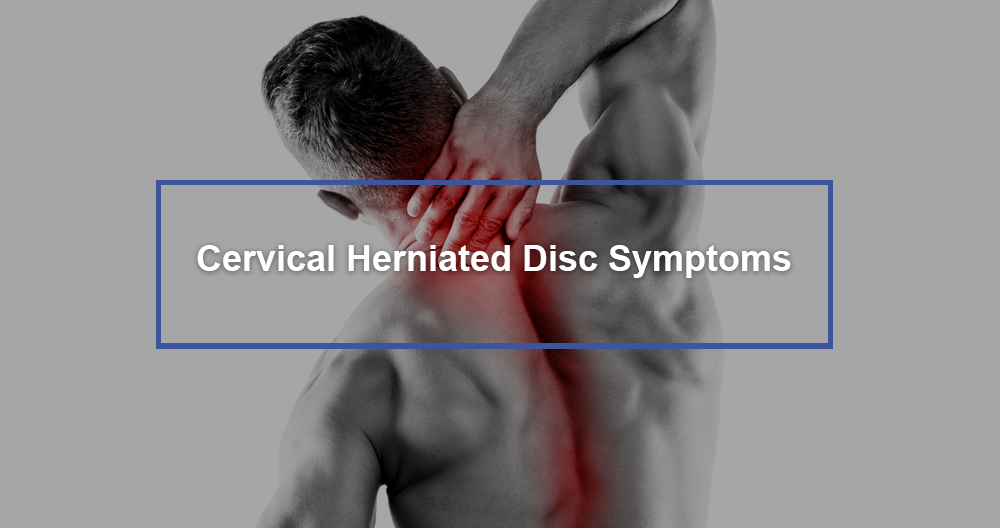Signs of a Herniated Disc in the Cervical Spine
Definition
Intervertebral discs refer to the tissue between your neck’s bones. The discs are made up of a soft, gel-like center with a tough outer liner. The intervertebral joint allows each of the bones to move by connecting them. The disc may herniate if the outer lining surrounding it tears.
The symptoms
A cervical herniated disc could cause pain in many areas or not at all. The pain may be aching in the neck or arm, or even radiating to these areas as an electric-like sensation. Sometimes, weakness or arm numbness may also occur. A cervical herniated spine can occur from trauma or injury to the neck. However, symptoms often appear on their own.
Cervical herniated-disc pain and related symptoms are often felt on one side or the other. There may be a variety of symptoms depending on which disc has ruptured and which nerve root has become inflamed or pinched. Rarely, the symptoms of tingling, numbness, pain and/or weakness can reach both the upper or lower extremities. Although rare, loss of bladder control and bowel control can also occur.
How to Herniated Cervical Discs
The cervical spine contains 6 intervertebral Discs. Each cervical disc sits between adjacent vertebrae, one above and one below, to cushion the vertebral body and help distribute weight from the neck and head. A disc is made up of two components.
- Annulus fibrosus. Concentric collagen fibers form the outer layer, making it sturdy enough to protect its inner layer. The annulus fibrosus absorbs shocks and helps the spine to bear heavy loads.
- Nucleus pulposus. This gel-like inner is a loose, gel-like network of fibers suspended in mucoproteingel and protected within an annulus fibrosus. The nucleus pilosus provides additional cushioning, flexibility, and mobility.
A herniated or damaged disc occurs when the outer protective layer of the disc tears, and some of its nucleus pulposus is leaking into the tear. The nucleus pulposus which contains inflammatory protein and can leak out of a herniated spinal disc causes most pain. The spinal cord may be affected less often by a herniated or ruptured disc.
Risk factors
Factors that increase the risk of herniated disc include:
- Weight. Additional stress is placed on the discs of the lower back by excess body weight.
- Occupation. Physically demanding jobs pose a higher risk for back problems. Herniated discs can be caused by repeated lifting, pulling and pushing, as well as twisting and bending sideways.
- Genetics. Some people inherit a predisposition towards developing a herniated or bulging disc.
- Smoking. It is believed that smoking reduces the oxygen supply and causes discs to break down faster.
- Frequent driving. The combination of prolonged sitting and vibration from the motor car engine can exert pressure on the spine.
- Being sedentary. Regular exercise can prevent herniated discs.
Complications
Your spinal cord terminates just above your waist. You will see a collection of long nerve root that look like a horse’s tail as it continues to the spinal canal (cauda-equina). Disc herniation is a rare condition that can cause a compression of the entire spinal canal. This includes all the nerves from the cauda Equina. Rarely, emergency surgery may be required to avoid paralysis or permanent weakness.
Seek immediate medical attention if necessary
- Worsening symptoms. These symptoms can lead to worsening pain, weakness, or numbness that can make it difficult to perform daily tasks.
- Bladder and bowel dysfunction. Cauda Equina syndrome can cause urinary incontinence or trouble urinating even if the bladder is full.
- Saddle anesthesia. This progressive loss of sensation affects all areas that would touch a horse’s saddle: the inner thighs and back of the legs as well as the area around the rectum.
What is a Cervical HerniatedDisc?
Rarely, symptoms from a cervical herniated disc may progress to become more severe than their initial stabilization and resolution. Tingling, numbness or weakness in the arm may occur if the cervical nerve root is not removed. If the spinal cord becomes inflamed or compressed by a cervical herniated, it can lead to problems with walking, coordination, bladder control, and/or decreased bladder or bowel control. These types of neurological disorders require immediate medical attention in an effort to prevent their progression or become permanent.



